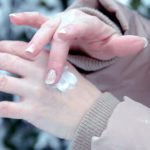It’s not just cold outside, but the days are also short. So it’s not unusual to have a case of the winter blues. But if you’re really feeling down and depressed, you could be suffering from seasonal affective disorder (SAD).
SAD is directly related to a decrease in sunlight during the winter which can disrupt our bodies’ internal clock and cause us to feel depressed. Fewer men are diagnosed with SAD than women, who make up 60 to 90 percent of SAD patients. In some cases, SAD sufferers exhibit hibernation-like behaviors such as avoiding the outside, as well as eating and sleeping more.
While antidepressants and increased exercise may help in some cases, there is an alternative treatment that is proving extremely effective: light therapy. Research has shown that light therapy can be used not just for SAD, but also for treating non-seasonal mood disorders (major depressive disorder or depression in pregnancy), the effects of jet lag or shift work, and bulimia nervosa.
UPMC psychiatrist Dorothy Sit, M.D., notes that while early evidence is promising, we still don’t know enough about the effectiveness of light therapy for patients with bipolar disorder. She and her colleagues are conducting a study examining the antidepressant effects of light therapy to improve mood symptoms and circadian rhythms in depressed women and men (ages 18-75) with bipolar disorder.
According to Dr. Sit, light therapy can generally be used to alleviate a range of mood symptoms, sleep problems, and circadian (daily) rhythm disturbances. Recent research found depressed patients in brightly lit wards left the hospital approximately three days earlier than those in darker wards, and a coronary ICU patient group with sunny rooms was associated with a lowered mortality rate, she said.
How it might work: light or darkness provides signals to the brain which promote sleep or wakefulness through effects on the hormone melatonin that helps regulate sleep. Darkness (twilight) prompts the brain to produce melatonin which makes us feel sleepy. In contrast, morning light prompts the brain to stop producing melatonin which helps us to wake up. We need a minimum of 1,000 “lux,” a measurement that represents the level of illumination, to synchronize our daily rhythms, but home or office lighting provides only 50-300 lux. For SAD, the recommended light box is a broad spectrum unit that filters out harmful UV rays that cause skin cancer. The usual dose is ~7000-10,000 lux for 45 minutes every morning, soon after you wake up.
Yet the time of day we receive this light is key. For example, if we have too much light at night (especially blue-screened light from computers and mobile devices!) it can throw off our bodies’ internal clock. But light also can affect attention/alertness, memory, and our sensory processes.
As Dr. Sit explains, scientists still do not fully understand the connection between light and mood. Light can improve mood from indirect effects that promote stable circadian rhythms. Or, light might improve serotonin signaling in brain pathways which can alleviate depression and restore a healthy mood state.
For patients who think they might have SAD, a proper evaluation should come first. This is very important because doctors do not recommend light therapy for some conditions. Plus, other conditions symptoms that are similar to depression (such as hypothyroidism) will need to be ruled out. Moreover, SAD symptoms can be very similar to symptoms of bipolar disorder, also known as manic depression.
During the course of light therapy for SAD, Sit recommends a physician or informed provider such as a therapist provides close and careful monitoring for adverse effects during the first two months of treatment.








